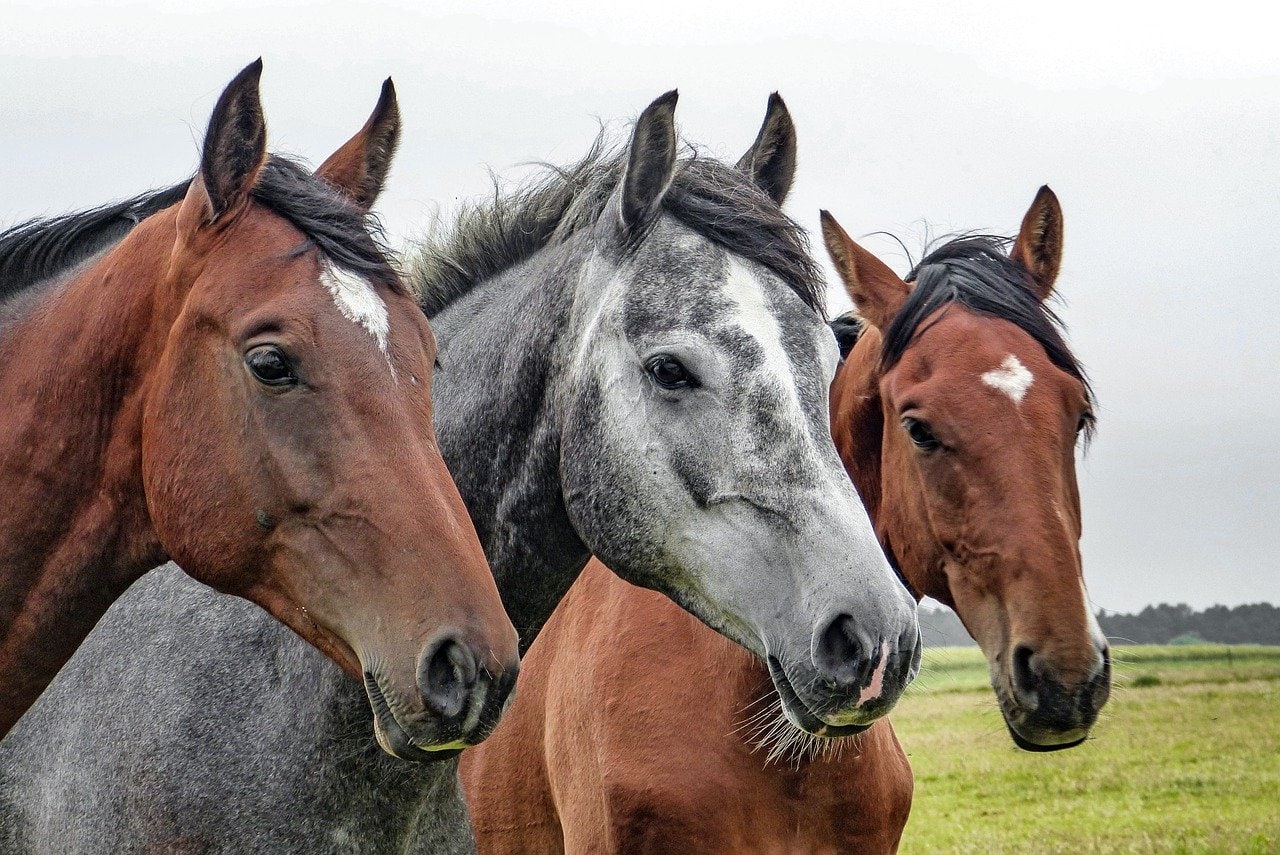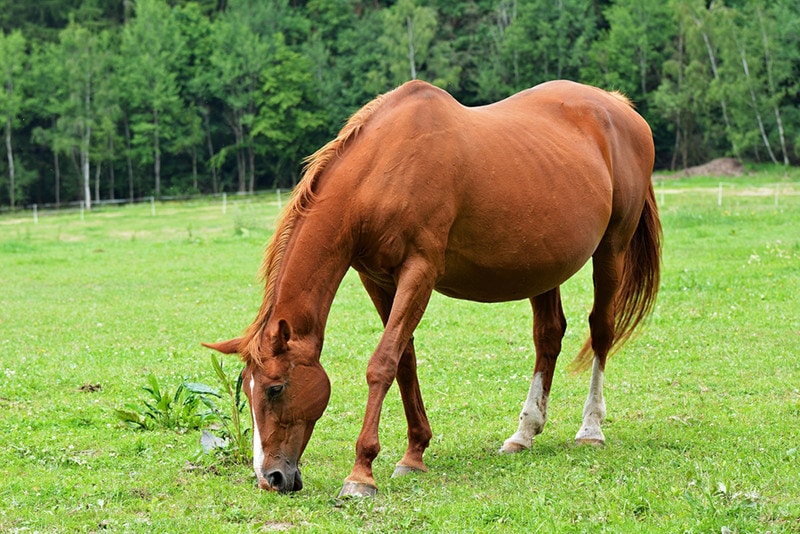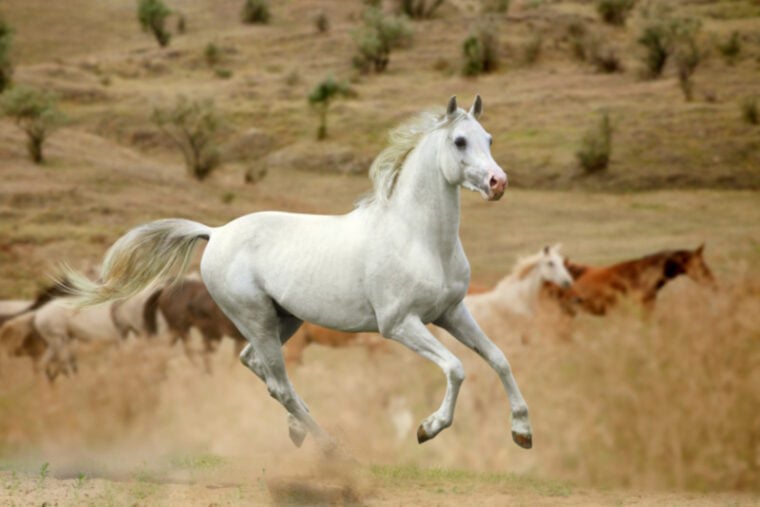
From the Indigenous people of North America on horseback to the Wild West to modern equestrian sports, horses are deeply ingrained in American culture. Unfortunately, the notion of native horse herds roaming the ancient plains in America is an enduring myth.
However, this article will go over some of North America’s most popular horse breeds so you can learn more about them.
Wait, Horses Aren’t Native to America?
No, they’re not. Although many horses’ lineage evolved in North America, they went extinct approximately 11,400 years ago during the Pleistocene era. All horses in America—both domesticated and feral—are descendants of horses domesticated in Eurasia and Africa.
Furthermore, the “wild’ horses in the American West, specifically, are descended from a domesticated breed introduced from Europe, the Spanish Mustang. Spanish conquistadors brought Mustangs to the continent around 1500 when Hernán Cortés arrived in Mexico. They are a non-native species introduced from their native lands as domesticated horses, making them feral but not wild.
All modern domesticated horses in America were produced from generations of selective breeding before being introduced to the continent, which is where we get our distinctly American horse breeds.
With this complicated history out of the way, we can dive into the 13 most popular American horse breeds.
Top 13 American Horse Breeds
1. American Quarter Horse

| Type | Warmblood |
| Average Height | 14.3–16 HH |
| Lifespan | 20–30 years |
| Disciplines | All |
Most often associated with the legacy of the American West, the American Quarter Horse is a former racing breed that earned its name for its exceptional sprinting speed over a quarter mile or less. These horses were developed in the 1600s on the East Coast using English Thoroughbreds and the Spanish stock horses of the conquistadors.
The most popular breed in America, the American Quarter Horse is a compact and agile breed that performs well in everything from ranch work to rodeos to English disciplines. Like their original lineage, Quarter Horses are often crossed with modern Thoroughbreds to produce the “Appendix”, which combines the qualities of each breed.
2. Mustang
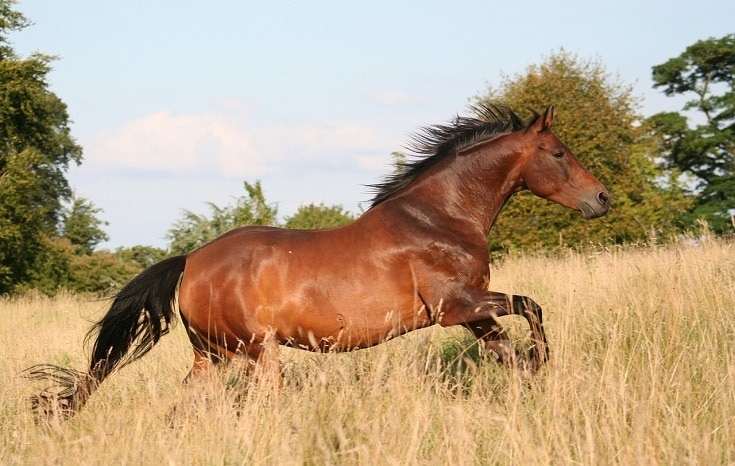
| Type | Warmblood |
| Average Height | 12–14 HH |
| Lifespan | 15–30 years |
| Disciplines | Primarily feral |
Mustangs are the free-roaming horses of the Western Plains states that descended from Colonial Spanish horses. Living feral in the plains, some of these horses show crossbreeding with other types of horses, including Quarter Horses and Thoroughbreds. Most of these horses are feral, though they can be ridden like any other horse with training.
There’s a lot of controversy around the state of feral Mustangs as an invasive species and land management with other livestock and ranching. Currently, these horses are protected by the Wild and Free-Roaming Horses and Burros Act of 1971, but they are often rounded up and adopted by qualified adopters1.
3. Appaloosa
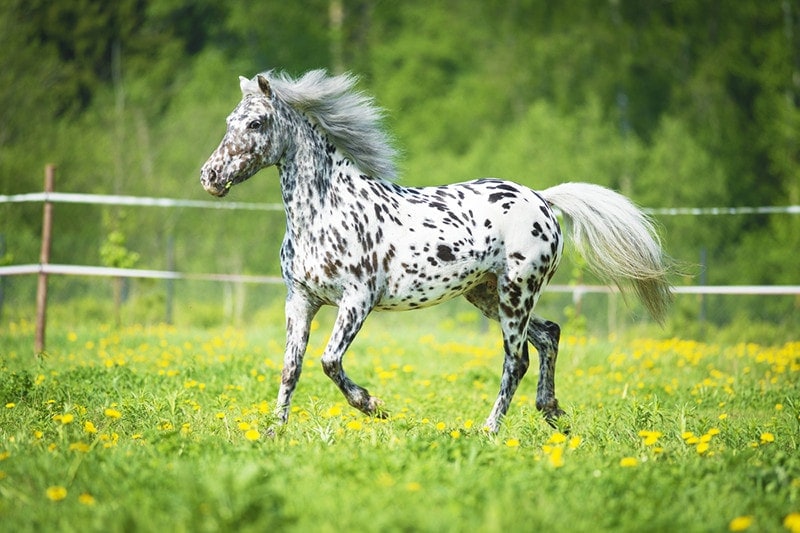
| Type | Warmblood |
| Average Height | 14.2–16 HH |
| Lifespan | 25–35 years |
| Disciplines | Western, hunter/jumper, endurance |
The Appaloosa is a striking horse breed with a colorful spotted coat pattern. Though it’s a breed of its own, the Appaloosa comes in a variety of patterns, coat colors, and body types because of the influence of different horse breeds throughout its history.
Spotted horses have appeared in artwork in Ancient Greece and China through modern times. The Nez Perce people, which inhabited what is now the Pacific Northwest, are responsible for developing modern Appaloosas. Though they’re typically used for Western disciplines, Appaloosas can succeed in a variety of roles, including hunter/jumper, endurance, and trail.
4. American Paint Horse

| Type | Warmblood |
| Average Height | 14.2–16 HH |
| Lifespan | 20–30 years |
| Disciplines | Western, hunter/jumper |
The American Paint Horse is a breed of horse that’s modeled after a western stock horse with a pinto pattern. The breed was developed from pintos that arose in the Quarter Horse and Thoroughbred bloodlines, leading to a spotted horse that has similar characteristics to an Appendix. A variety of coat patterns are accepted, but the American Paint is strictly bred to maintain its stock-type body.
Like Quarter Horses, Paints are often used in a variety of equestrian disciplines, but they’re most commonly found in Western pleasure and reining events.
5. American Saddlebred
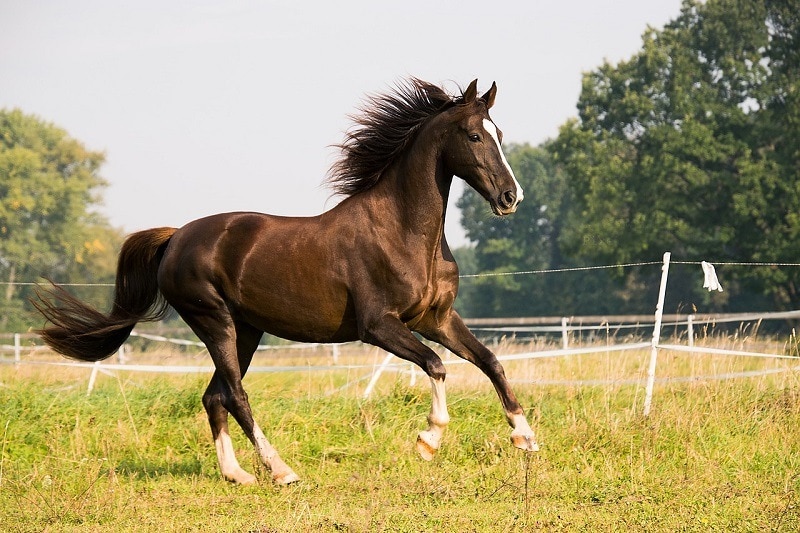
| Type | Warmblood |
| Average Height | 15–16 HH |
| Lifespan | 20–30 years |
| Disciplines | Breed shows, saddle seat, competitive trail, endurance, dressage, eventing |
The American Saddlebred is a gaited horse breed that was developed from riding horses during the American Revolution. The Saddlebred was developed into its modern form in Kentucky, which gave it the name. “Kentucky Saddler”. Saddlebreds were used as officers’ horses during the American Civil War.
Its lineage includes the Narragansett Pacer, Canadian Pacer, Morgan, and Thoroughbred, which gives the Saddlebred versatility. Though there are welfare issues around the Saddlebred’s specific gait, it’s prized as a horse for the show ring, even attracting the attention of Hollywood in movies like National Velvet and My Friend Flicka.
6. Morgan

| Type | Warmblood |
| Average Height | 14.1–15.2 |
| Lifespan | 20–30 years |
| Disciplines | Western, dressage, show jumping, driving |
The Morgan was one of the earliest horses developed in America. Named for its owner, Justin Morgan, Morgan horses are descended from the now-extinct Narragansett Pacer breed. Throughout history, they’ve been used for coaches, harness racing, riding, and cavalry during the American Civil War.
Several modern horse breeds were developed from the Morgan, including the American Quarter Horse, American Saddlebred, and the Tennessee Walking Horse. They were also sent to England in the 1860s to influence the breeding of Hackney horses and their distinct trotting ability. Currently, Morgan horses participate in a wide range of disciplines.
7. Tennessee Walking Horse
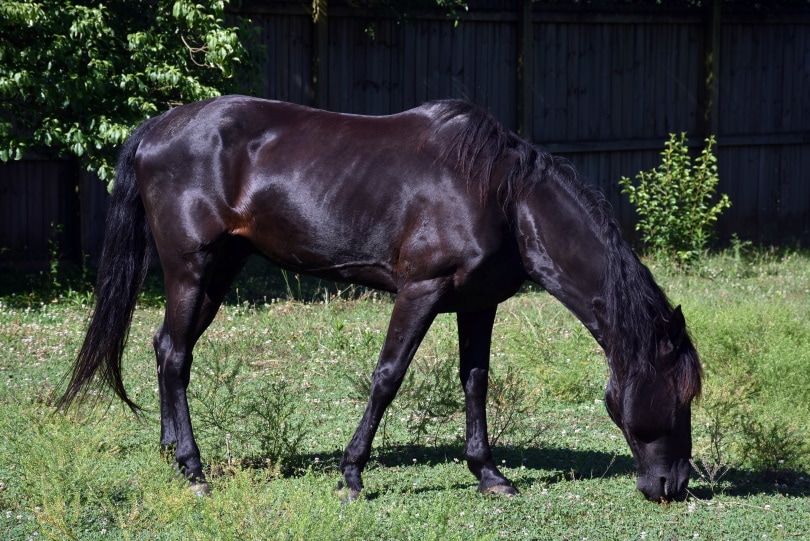
| Type | Warmblood |
| Average Height | 15.2 HH |
| Lifespan | 20–30 years |
| Disciplines | Breed competition, Western, trail riding |
The Tennessee Walking Horse is a breed of gaited horse that’s known for its unique four-beat walk and flashy style. Though the Tennessee Walker was originally developed for riding in the American South, it became a popular show breed with its exaggerated movement.
The modern Tennessee Walker was influenced by Narragansett Pacers and Canadian Pacers, as well as Spanish Mustangs. Their current bloodlines are strict, however, because of their breed-specific show qualities. Tennessee Walkers are also the subject of animal welfare issues, as they have been subjected to inhumane practices to exaggerate their gaits. This includes “soring” to cause pain and exaggerate the “Big Lick” style movement.
8. American Cream Draft

| Type | Coldblood |
| Average Height | 15–16.3 HH |
| Lifespan | 25–35 years |
| Disciplines | Driving |
The American Cream Draft is an American breed of draft horse named for its golden champagne color. All modern American Creams were developed in the early 20th century from a cream-colored mare named Old Granny. As farm horses, American Creams have declined since the 1940s and are still a rare breed. In fact, their conservation status is considered critical by The Livestock Conservancy and the Equus Survival Trust.
Though named for a color, the American Cream is genetically distinct from other draft breeds. They’re related to the Belgian, Percheron, Suffolk Punch, and Haflinger breeds, but their bloodlines have been pure since the early 20th century. A famous herd of American Cream Draft horses lives in Colonial Williamsburg, providing wagon and carriage rides.
9. Missouri Fox Trotter

| Type | Warmblood |
| Average Height | 14–16 HH |
| Lifespan | 20–30 years |
| Disciplines | Trail riding |
The Missouri Fox Trotter was developed in the Ozark Mountains of Missouri in the early 19th century. It’s a gaited breed with some stock horse abilities from its lineage of Arabian, American Saddlebred, Morgan, Tennessee Walker, and Standardbred influences.
Missouri Fox Trotters were named for their famous trait—an ambling movement known as the “fox trot.” Fox Trotters don’t have a trot like other horses. Instead, they have a four-beat trot that offers a smooth ride in comparison. Currently, Fox Trotters are used for pleasure trail riding and often crossed with donkey jacks to create docile mules for adventure tours, such as the Grand Canyon.
10. Standardbred
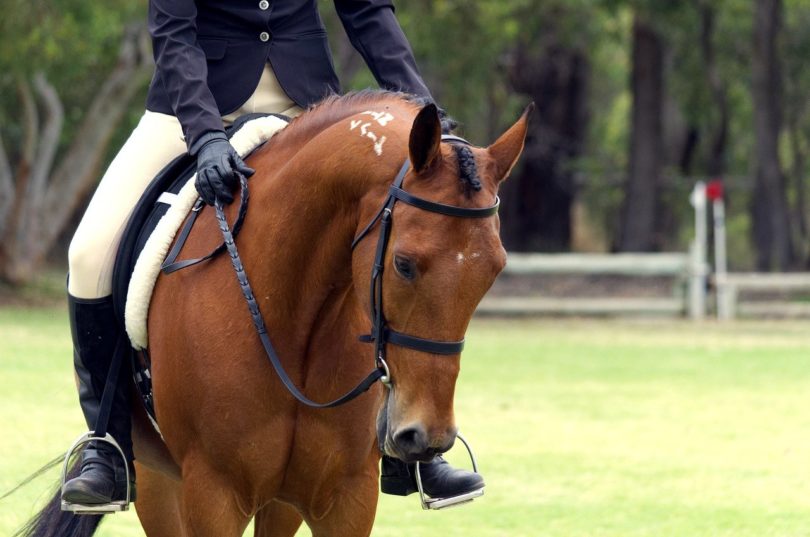
| Type | Warmblood |
| Average Height | 14–17 HH |
| Lifespan | 20–30 years |
| Disciplines | Harness racing |
The Standardbred is a racing breed primarily used for harness racing, which has a trot or pace instead of a gallop. Standardbreds were influenced by a range of breeds, including the Narragansett Pacer, Canadian Pacer, Thoroughbred, Norfolk Trotter, Hackney, and Morgan, though the foundational bloodlines go back to a Thoroughbred foaled in England.
The breed was developed in America, but they’re recognized worldwide for their distinctive gaits. They’re the exclusive breed used for harness racing, though retired Standardbreds are often found in other disciplines like pleasure riding, trail, and hunter/jumper sports.
11. Rocky Mountain Horse

| Type | Warmblood |
| Average Height | 14–16 HH |
| Lifespan | 20–30 years |
| Disciplines | Pleasure, endurance |
Despite the name, the Rocky Mountain Horse was not developed in the Rocky Mountains. It was bred in Kentucky in the Appalachian Mountains from a foundation stallion that was brought to the state in 1890. Though not a color breed, most Rocky Mountain Horses are a chocolate color with a flaxen mane and tail.
Like the other horse breeds prized in Kentucky, the Rocky Mountain Horse is a gaited breed that was developed by crossing Spanish horses from the south with English horses from the North. The other gaited breeds originated in the same region and from the same mix of Spanish and English bloodlines. These horses were designed for farm use, but they were also used for pleasure riding and endurance riding.
12. Chincoteague Pony

| Type | Coldblood |
| Average Height | 12–13 HH |
| Lifespan | 20–30 years |
| Disciplines | Driving |
The Chincoteague Pony is a breed of horse that developed in Virginia and Maryland, where it now lives. Also called the Assateague Horse, Chincoteague Ponies live in semi-feral or feral herds on Assateague Island under federal management. Though they’re referred to as ponies, they have more in common with horses. When they’re domesticated and given proper nutrition, Chincoteague Ponies often exceed their average feral height of 13.2 hands.
Because the herds are split between Maryland and Virginia, they’re under state guidance as well. The ponies in the Maryland herd on the Assateague Island National Seashore are treated as wildlife with no additional veterinary care or measures to control their population. The Virginia herd, found within the Chincoteague National Wildlife Refuge, is given veterinary care twice a year and may be sold at auction to private owners. Domesticated ponies are often crossed with taller horse breeds and ponies and used for cart-pulling or trail riding.
13. Thoroughbred

| Type | Hotblood |
| Average Height | 15.2–17 HH |
| Lifespan | 20–30 years |
| Disciplines | Racing, steeplechasing, eventing, hunter/jumper, western |
The Thoroughbred was developed specifically for horse racing. These horses were developed in England in the 17th and 18th centuries by crossing Arabian, Barb, and Turkoman stallions with native mares. All modern Thoroughbreds trace their lineage back to three stallions imported to England at the time.
Once retired from racing, Thoroughbreds are often used for other riding disciplines like dressage, polo, fox hunting, show jumping, and on occasion, western sports. They’re also bred for riding instead of racing. Thoroughbreds have been influential in creating many American breeds, including the Anglo-Arabian, the Standardbred, the Quarter Horse, and several European warmblood and sport horse breeds.
Conclusion
Horses are part of American culture, but they originated in other parts of the world. Once they arrived on North American shores, they were selectively bred and developed, creating distinct American horse breeds.
Featured Image Credit: mariait, Shutterstock

